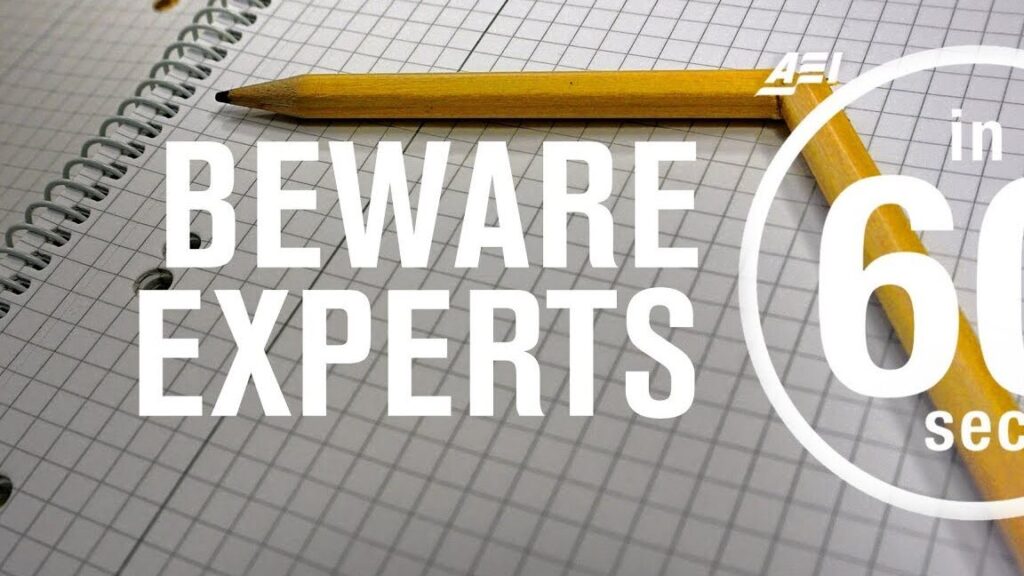
The Pros and Cons of Education Reform: A Comprehensive Analysis

Education reform has become a hotly debated topic in recent years, with various stakeholders advocating for changes to improve the quality and accessibility of education. From policymakers to educators to parents and students, everyone has an opinion on what needs to be done to ensure that our education system is preparing students for the challenges of the 21st century. However, like any complex issue, education reform has its pros and cons that must be carefully considered.
In this article, we will delve into the different aspects of education reform and explore the advantages and disadvantages that come with implementing changes in our education system. We will examine the potential benefits, such as closing the achievement gap, increasing graduation rates, and equipping students with the skills they need to succeed in a rapidly changing world. Additionally, we will also discuss the potential drawbacks, including the cost of implementing reforms, the challenges of standardization, and the potential for unintended consequences. By providing a comprehensive analysis of education reform, this article aims to shed light on the complexities of this issue and facilitate informed discussions about the future of education.
Index
- Pros of Education Reform: Improving Student Outcomes and Performance
- Cons of Education Reform: Potential Negative Impact on Teachers and Schools
- Analyzing the Effectiveness of Education Reform: Key Factors to Consider
- The Future of Education Reform: Challenges and Opportunities
- Frequently Asked Questions
Pros of Education Reform: Improving Student Outcomes and Performance
Cons of Education Reform: Challenges and Opposition
While education reform has the potential to bring about positive changes, it is not without its challenges and opposition. Here are some of the main concerns raised by critics:
- Resistance to Change: One of the biggest challenges of education reform is the resistance to change from various stakeholders, including teachers, parents, and policymakers. Many people are comfortable with the current system and may be hesitant to embrace new approaches.
- Financial Constraints: Implementing education reform can require significant financial investments, such as funding for updated curriculum materials, technology, and professional development for teachers. Limited funding can hinder the implementation of necessary changes.
- Standardized Testing: Critics argue that education reform often places too much emphasis on standardized testing, which can lead to a narrow focus on test preparation rather than holistic learning. Some believe that this approach does not accurately measure student abilities and can create unnecessary stress and pressure.
- Unequal Access: Education reform may inadvertently exacerbate existing inequalities in the education system. Some argue that certain reforms, such as school choice or charter schools, may favor privileged students and leave disadvantaged students behind.
- Evaluation and Accountability: While accountability is an important aspect of education reform, critics argue that the evaluation methods used to measure student and teacher performance may not accurately reflect the complexities of education. They believe that a one-size-fits-all approach may not capture the true value of education.
It is important to acknowledge and address these concerns in order to create meaningful and sustainable education reform. By engaging in open dialogue and considering different perspectives, we can work towards a system that benefits all students and prepares them for the challenges of the future.
Cons of Education Reform: Potential Negative Impact on Teachers and Schools

While educational reform is often seen as a necessary step towards improving the education system, there are also significant concerns and drawbacks associated with it. One of the main areas of concern is the potential negative impact on teachers and schools.
One of the key criticisms of education reform is that it often places a heavy burden on teachers. With new standards, curriculum changes, and increased accountability measures, teachers may feel overwhelmed and stressed. They may have to spend additional time and resources to adapt to the changes and meet the new requirements.
Furthermore, education reform often involves standardized testing as a way to measure student performance and hold schools accountable. While testing can provide valuable data, it can also lead to a narrow focus on test preparation and a "teaching to the test" mentality. This can limit the creativity and flexibility of teachers, as they may feel pressured to prioritize test scores over other important aspects of education.
Additionally, education reform can lead to increased competition among schools and districts. With the emphasis on accountability and performance, schools may feel compelled to prioritize test results and rankings. This can create a high-stakes environment where schools are more focused on outperforming others rather than providing a well-rounded education.
Another concern is the potential for education reform to exacerbate existing inequalities in the education system. While the goal of reform is often to improve educational outcomes for all students, it can unintentionally widen the achievement gap. Schools in disadvantaged areas may struggle to meet the new standards and requirements, further disadvantaging already marginalized students.
Overall, while education reform has its merits and can lead to positive changes, it is important to consider the potential negative impact on teachers and schools. It is crucial to approach reform with caution and ensure that the well-being of educators and students is prioritized.
Analyzing the Effectiveness of Education Reform: Key Factors to Consider
When it comes to education reform, there are strong arguments both in favor and against making changes to the current system. It is important to analyze the effectiveness of these reforms and consider the key factors that impact their success.
Pros of Education Reform
One of the main arguments in favor of education reform is the need for improvement in the quality of education. Advocates for reform argue that the current system is outdated and fails to adequately prepare students for the challenges of the modern world. They believe that reform can lead to better academic outcomes and increased opportunities for students.
Another pro of education reform is the potential for increased equity and access to education. Supporters argue that reform can address the achievement gap and ensure that all students have an equal opportunity to succeed. They believe that by implementing changes to the system, such as providing more resources to underprivileged schools and communities, educational opportunities can be more evenly distributed.
Additionally, education reform can also lead to innovation and the implementation of new teaching methods. Proponents argue that by embracing change, schools can adapt to the evolving needs of students and better prepare them for the future. This can include incorporating technology into the classroom, personalized learning approaches, and interdisciplinary teaching methods.
Cons of Education Reform
On the other hand, opponents of education reform have valid concerns about the potential drawbacks and unintended consequences of making changes to the current system. One of the main arguments against reform is the fear of a one-size-fits-all approach. Critics argue that implementing standardized testing and curriculum can stifle creativity and limit the autonomy of teachers. They believe that education should be tailored to the individual needs of students rather than following a rigid structure.
Another con of education reform is the potential for increased bureaucracy and administrative burden. Detractors argue that implementing changes to the system can lead to additional paperwork and regulations, taking valuable time away from teaching and learning. They believe that the focus should be on empowering teachers and providing them with the resources and support they need to be effective in the classroom.
Furthermore, opponents of education reform express concerns about the potential for increased inequality. They argue that reforms may inadvertently exacerbate existing disparities by redirecting resources away from underprivileged schools and communities. Critics believe that a more holistic approach is needed to address the root causes of educational inequity.
Conclusion
When analyzing the effectiveness of education reform, it is important to consider both the pros and cons. While reform can lead to improvements in the quality and equity of education, there are also potential drawbacks that need to be carefully addressed. Ultimately, any changes to the education system should prioritize the needs of students and aim to provide them with the best possible opportunities for success.
Remember, education reform is a complex issue with varying perspectives. It is crucial to consider the opinions and experiences of educators, policymakers, students, and parents when evaluating the potential impact of any proposed reforms.
The Future of Education Reform: Challenges and Opportunities
As we navigate the ever-changing landscape of education, the need for reform becomes increasingly apparent. Educational reform is a multifaceted topic that encompasses a wide range of perspectives, with both supporters and detractors offering compelling arguments. In this article, we will delve into the pros and cons of education reform, exploring the challenges and opportunities that lie ahead.
The Pros of Education Reform
One of the key advantages of education reform is the potential for improved student outcomes. By implementing new teaching methods, curriculum enhancements, and innovative technologies, reform initiatives aim to provide students with a more engaging and effective learning experience. Proponents argue that these changes can lead to higher academic achievement, increased graduation rates, and better preparation for future careers.
Another benefit of education reform is the opportunity to address systemic inequities. By focusing on equal access to quality education, reform initiatives strive to bridge the achievement gap among different socioeconomic and racial groups. This can help level the playing field and ensure that all students have an equal chance to succeed, regardless of their background.
Furthermore, education reform can promote teacher professional development and job satisfaction. By investing in teacher training programs and providing ongoing support, reform initiatives aim to empower educators with the skills and resources needed to excel in the classroom. This can lead to higher job satisfaction, lower teacher turnover rates, and ultimately, better educational outcomes for students.
The Cons of Education Reform
Despite the potential benefits, there are also valid concerns and criticisms surrounding education reform. One common criticism is the emphasis on standardized testing. Critics argue that an overreliance on standardized tests can lead to a narrow curriculum and teach students to memorize facts instead of fostering critical thinking and problem-solving skills.
Another concern is the potential for increased privatization and commercialization of education. Critics argue that certain reform initiatives, such as the expansion of charter schools or the use of private companies to manage public schools, can lead to a lack of accountability and the prioritization of profit over quality education.
Additionally, some argue that education reform can undermine the autonomy and expertise of teachers. Critics contend that top-down reform initiatives may overlook the valuable insights and experiences of educators, leading to a one-size-fits-all approach that may not effectively address the unique needs of each student and community.
The Way Forward: Balancing Change and Continuity
As we consider the pros and cons of education reform, it is clear that finding the right balance is crucial. While change is necessary to adapt to the evolving needs of students and society, it is equally important to preserve the elements of education that have proven successful.
Education reform should prioritize evidence-based practices, incorporating research and input from educators, parents, and students. By engaging all stakeholders in the decision-making process, reform initiatives can ensure that changes are informed, sustainable, and responsive to the needs of the diverse student population.
In conclusion, education reform is a complex and nuanced topic, with both advantages and disadvantages. By carefully considering the pros and cons, we can develop comprehensive reform initiatives that promote equity, improve student outcomes, and empower educators to create a positive and impactful learning environment.
Frequently Asked Questions
What is education reform?
Education reform refers to the process of making changes and improvements to the education system in order to enhance student learning and outcomes.
Why is education reform important?
Education reform is important because it helps address the evolving needs of students, prepares them for the future, and ensures a more equitable and effective education system.
What are some common goals of education reform?
Common goals of education reform include improving student achievement, increasing graduation rates, reducing achievement gaps, and enhancing teacher quality and effectiveness.
What are some strategies used in education reform?
Strategies used in education reform can include implementing new curriculum standards, adopting innovative teaching methods, providing professional development for teachers, and increasing funding for education initiatives.
Si leer artículos parecidos a The Pros and Cons of Education Reform: A Comprehensive Analysis puedes ver la categoría Society and Lifestyle.






Leave a Reply